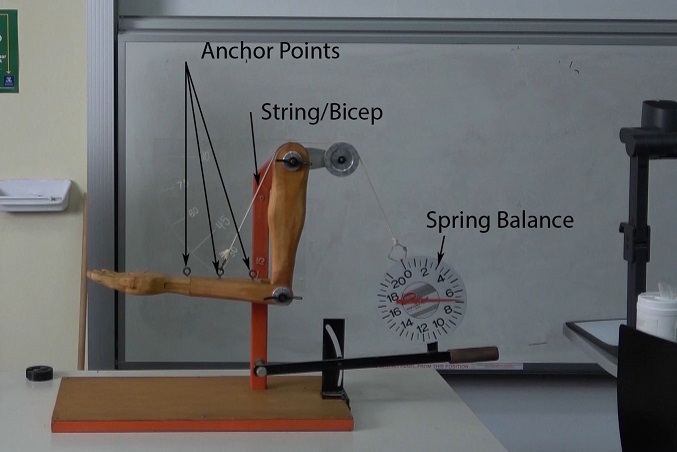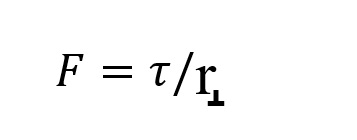Mi-14 The Human Arm
Aim
To demonstrate the Torque and Forces involved in the movement of the Human Arm.
Apparatus
- Model of the Human Arm
- Spring Balance
Diagram

Description
The Model of The Human Arm has 3 anchor points that a string connected to a spring balance is connected to. The string represents the bicep of the human arm. The spring balance measures the tension in the string (bicep). The bicep is a muscle that is connected to the shoulder and 3cm past the elbow on the forearm by tendons. When you lift your forearm the bicep contracts, so that process can happen. To lower your forearm your tricep contracts. The tricep is the muscle connected to back of your upper arm. The 3 anchor points positioned on the forearm are positioned 3cm from the elbow, 3cm from the wrist, and midway point on the forearm. When the string is connected to the anchor point closest to the wrist, the force required to lift the forearm is less than the 2 other anchor points. When the string is connected to the anchor point closest to elbow, the force required to lift the forearm is greater than the 2 other anchor points. This replicates the situation that happens in the actual human arm.
Torque τ is given by the equation
τ=F.r﬩
Force can be rewritten

Given that the mass of the human arm is constant. The smaller r̝ is the greater the force required to lift the forearm. The force required to lift a 10Kg dumbbell using your forearm, is greater than lift 10Kg vertically up with a pulley.